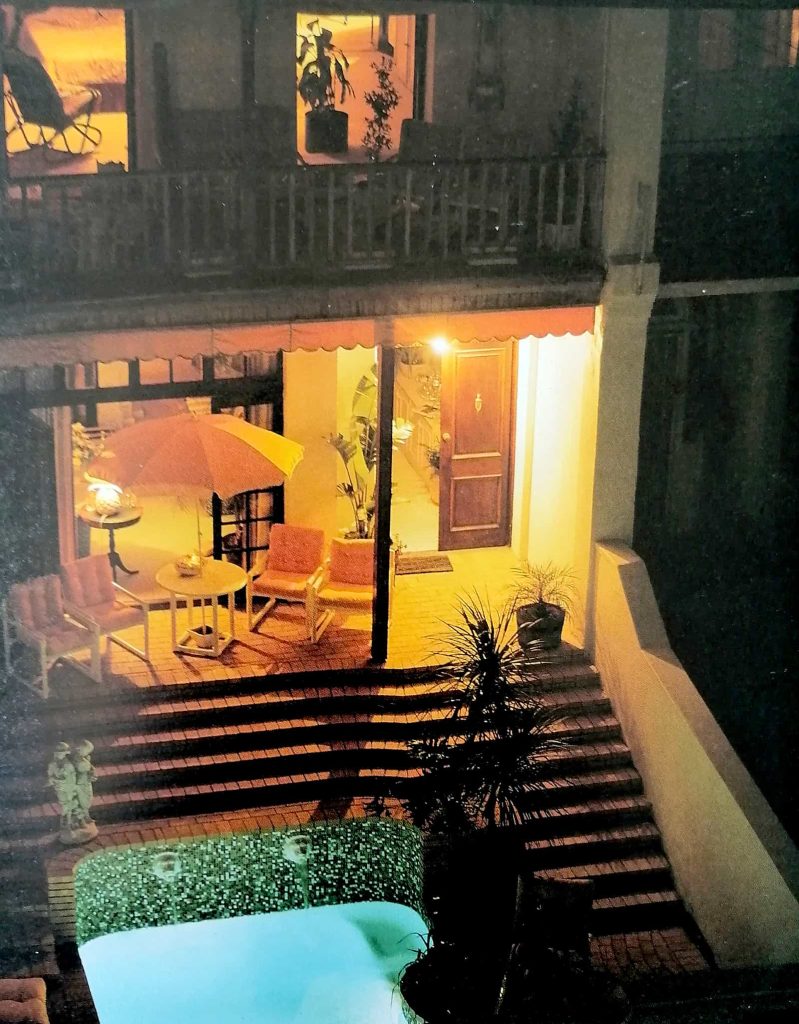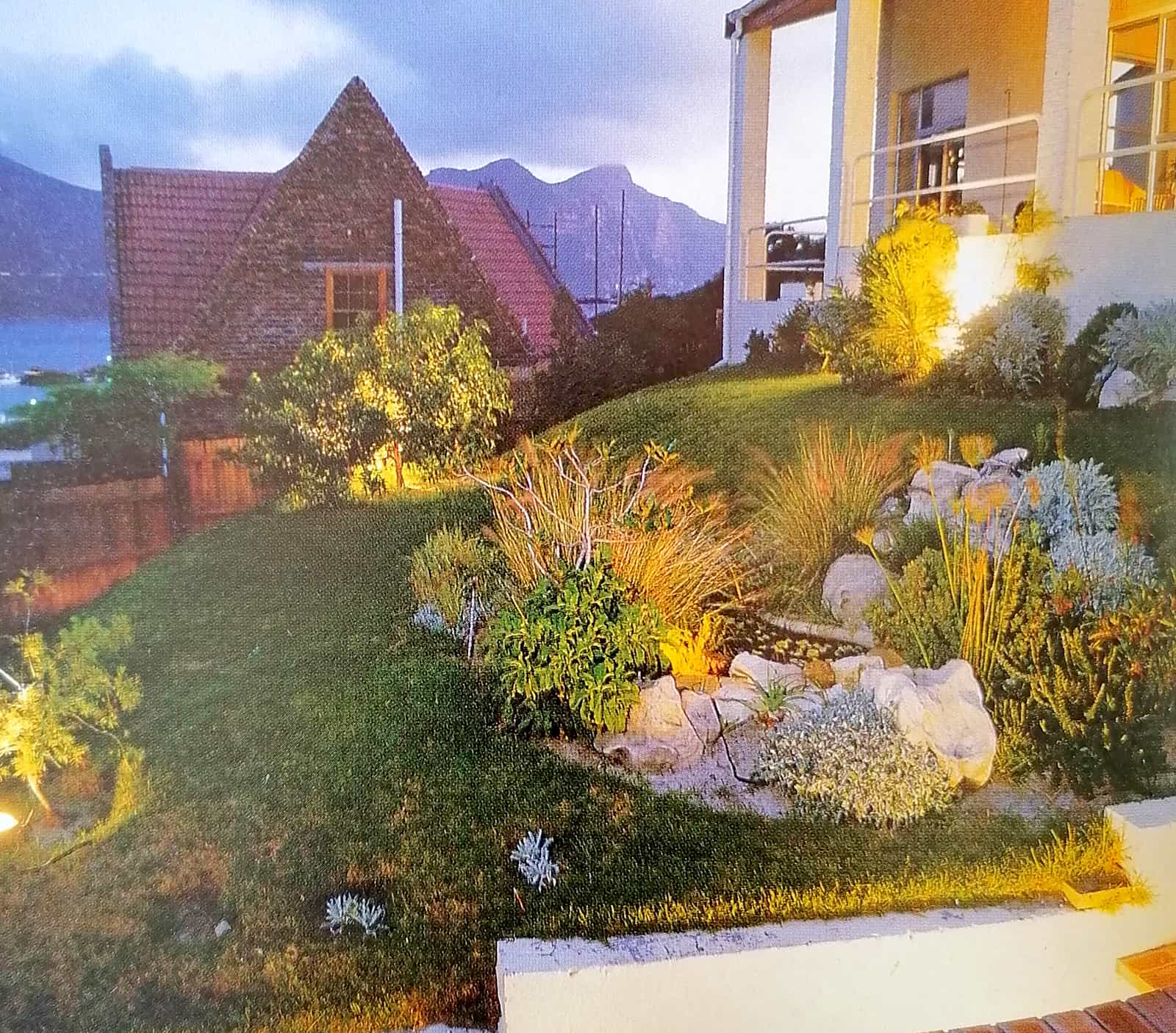8 Magical Types of Garden Lighting
Garden lighting has an important place in the decorative scheme of any outdoor area, adding a further dimension to your outdoor area. A few strategically placed fittings will immediately bring backyard and garden alive, accentuating the shapes and forms of plants, lending charm and character to patios, poolsides, barbecue areas, transforming even a mediocre yard into a magical fairyland at night.


Backyard and garden lighting also has its practical value of course. On the patio, it enables you to entertain at night in attractively atmospheric surrounds. And it is also important from both a security and a safety point of view, illuminating dark areas where intruders could lurk unseen, as well as features – pathways and steps for example – that could pose a hazard in the dark.
If there are large rocks in unexpected places, these too should be highlighted in some way. For safety reasons pool areas should always be properly lit, preferably with underwater lighting as well as floodlights or spots.


Other entertainment and activity areas – tennis court, barbecue and so on – also need some form of permanent garden lighting. So too does the entrance to your property, the front door and its surrounds, and the garage. Here, an automatic system, activated when the natural light fades, is a particularly good option. These systems operate either within a certain distance of an electrically powered control box, or from a mechanism in the light fitting itself. The latter option is considerably cheaper, but unfortunately does not have a very long lifespan and will need to be replaced from time to time.
Solar powered lights are the best option. There are a myriad of options, including small units that generate electricity from sunlight during the day and automatically recharge their batteries. No wires or fuss!
Light fittings attached to the house are usually part of the internal electrical arrangement; those in the yard may be on a separate circuit. And, just as all electrical installations in the house must be carried out by a licensed electrician, so too must those in the yard. If your property is large, or if you are fitting a borehole or swimming pool pump, he may have to alter the single-phase system to a three-phase one. These additional amenities draw a lot more power than the 15 kva – kilovolt amps – provided by the standard power source. So, it stands to reason that they draw considerably more power than any sort of garden lighting.
The electrician will also have to use suitable water-proof cabling (which he will bury underground) and ensure that there is earth leakage. Make absolutely certain you know where all the cables are located, and pass this information on to anyone else working in the yard: one has to be very careful to avoid the accidental severing of underground wiring.
Type
Exterior lighting may either be direct, casting a single beam, or evenly spread. casting a general glow over the outdoor area. Some forms of lighting are a lot more decorative than functional, giving very little useful illumination.
Direct Garden Lighting
Spotlights cast a direct shaft of light in a particular direction. This may be for practical reasons – to light up that part of the yard around the front door, for instance or it may be designed to emphasize a particular element of the yard. Focal points include statues and sculptures, garden benches and special plant features, although spots are also commonly used within a garden bed (as uplighters).
Generally speaking, reflected illumination is the more attractive. Aim to bounce direct light off walls or plants, or plan direct lighting so that there is some diffusion of the beam – by concealing it in foliage, for example, or behind a tree. This will produce a gentler, prettier effect.
General Garden Lighting
Overall general lighting is difficult to achieve in the yard unless a fair number of fittings are positioned at strategic points. But this rarely presents a problem, as it is far more effective to create pools of light within the yard itself and to limit general lighting to limited spaces, like patio and pool area. Here, lamps and wall-mounted fittings will usually be sufficient.
Bollard lights are well suited to driveways and pathways, and a series of these set along the edges will give good general illumination.
Although floodlights technically fall within the category of direct lighting (not garden lighting), they are powerful enough to wash a wide area with illumination, so creating a ‘general’ lighting effect.

Decorative Garden Lighting
Many types of lighting are decorative as well as practical – uplighters will dramatize leaf shapes, highlighting the foliage while lamps will cast a moody glow over a wider area.
Some light fittings, including period-style freestanding lamps, wall-mounted carriage lamps and molded Japanese lamps are attractive features in themselves.
Colored fairy lights are also decorative, of course, but more suited to festivities than permanent yard lighting. Strung around an entertainment patio or barbecue area, or over the branches of large trees, they will help create a party atmosphere. However, if you are going to install permanent colored lights, first consider the effect different colors will have on foliage. For instance, blue light should generally be avoided as it is cold and will give an unnatural look to plants. Green and amber are probably the best choices for most yards.

Fittings
There is a wide selection of lights and lamps that are suitable for any backyard or patio. Intended for exposure to rain, the units are sealed for protection. Those designed for use in flower beds often incorporate plastic spikes to help fix them firmly into the ground.
Low-voltage illumination is especially useful if you want to create mood lighting in the outdoor area, particularly on patios.
The style of light fitting chosen is important only, of course, if it is to be visible. An old Victorian street lamp will look charming at the entrance to a house built in this period; similarly, concrete Japanese lamps will enhance a yard planned in the genre.
However, many fittings are better concealed, so that they create mood rather than simply introduce bright shafts of light.
Candles
Although candles fall in the category of temporary lighting, they have their uses in the yard. Ordinary ones may be used on an outdoor table to create atmosphere during alfresco eating, or you may prefer special, slow-burning yard ones mounted on sticks set in the ground. More sophisticated bamboo flares are also available.
For parties and special events, place candles in brown paper packets half filled with sand. They will glow beautifully and the packet will prevent the wind from extinguishing the flames.
Floating candles are another charming option for festive occasions. These may be placed in water filled bowls on the table, or perhaps on the surface of a pond or even of the swimming pool.
Floodlights
So, generally, you won’t include floodlights in your garden lighting design.
These intensely bright lights are used to ‘flood’ large areas with light. But, since a little illumination goes a long way in a garden environment, they are not widely used except on very large properties where security is a vital factor. If you have a tennis court, however, it will of course need to be floodlit if you are to use it at night.
Lamps
A wide range of freestanding lamps is available for wall-mounting, for the tops of pillars, and for fitting on sturdy posts. They are useful for many outdoor areas where illumination is essential, including the entrance to a driveway, outside the front door, and alongside a pathway or long drive. They are particularly practical for patios and other entertainment areas.
For a covered deck, porch, or verandah, you can position an ordinary lamp permanently on a table. Just be sure to keep it away from open spaces and from the moisture that can drift in. Here the choice of shade is important, as anything too flimsy will easily be damaged by harsh sunlight. The lamp itself should also be sturdy enough to withstand wind.
Hand-held gas lamps are not particularly pretty, but they are useful in areas which do not have permanent lighting. They are also a sensible solution if you have not yet installed your outdoor system.
Lanterns
Hanging lanterns may be used on the patio in addition to other more permanent lighting. There are various types on the market, including those fuelled with paraffin and oil. Inexpensive candle lamps are also available. Hurricane lamps, designed to withstand high-velocity winds, can be useful and they look good in a Victorian-style garden.

Pool Lighting
Most pools and spas that have underwater lighting are so equipped when they are installed or constructed. This kind of illumination looks attractive and, moreover, has its relevance in terms of safety (among other things they enable you to keep an eye on the swimmers, and to act effectively should anyone get into difficulty).
If a pool does not have underwater lighting, it is important to ensure that the area is well lit with spotlights, lamps or by a floodlight. Remember that paving can become slippery when wet, which is a particular hazard at night.
In addition to underwater and specific lighting, consider illuminating areas of the surrounding yard for effect, especially if you like to entertain guests by the pool in the evening.

Spotlights
These may be mounted on the external walls of the house or grouped within the branches of a large tree, the intensity of their light depending largely on where they are located.
Spotlights are useful and practical on barbecue patios and for other kinds of alfresco eating, where they can be positioned to throw a pool of light over the surface of the table, and are ideal as accent lighting, drawing attention to statuary and other ornamental garden features. They are particularly effective near water, which will sparkle and shimmer in the golden glow.
If the patio is used for specific activities at night – reading, for example – spotlights are the most sensible option, fulfilling the same function as any other localized indoor task lighting.
Uplighters
Used for both general and direct lighting, uplighters are a particularly useful device for creating effect within a large bed planted with shrubs and perennials, and for illuminating the foliage of trees (but it is sensible to take the trouble to place the fittings behind the trunk to create an interesting silhouette effect).
Uplighters may also be used in flowerbeds or between shrubs alongside a driveway or path to give a diffused light, bright enough to guide you on your way home after dark.
Wall-mounted lights
There is a reasonably wide choice of lights manufactured for use on patios and external walls. These range from plain glass units to attractive carriage lamps. Wall-mounted lights, fitted low down, are also useful for illuminating steps.


